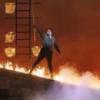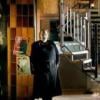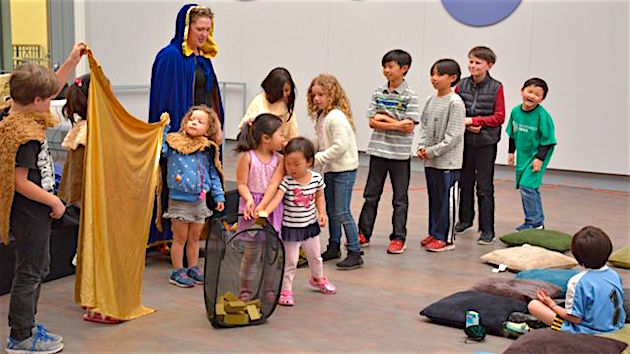
“There is a kind of apocalyptic mindset that runs like a red thread through the Ring cycle. Violation, outrage, and redemption are prominent themes in the operas, and the same is true of [Buddhist guardian deity] Gonpo, who’s on view in our galleries.
“The outrage has been committed by the two figures beneath Gonpo’s feet, and it’s demonic-seeming Gonpo who is the redeemer — literally flipping Wagner’s aesthetic ideals on their heads.”
The unexpected Wagner parallel is from Jeff Durham, co-curator of the “Divine Bodies“ exhibit at the Asian Art Museum. The museum has become a new and important venue for Ring lectures and interactions.
San Francisco Opera’s 15-hour presentation of the four operas of Richard Wagner’s Ring of the Nibelung, June 12–July 1, is making waves around the Bay Area, far beyond its War Memorial Opera House home.
When Francesca Zambello’s “American Ring” production was created eight years ago, the cost was estimated at $23 million, and the expected audience of 40,000 — including thousands of out-of-town hotel guests and restaurant customers — made a major contribution to the city’s economy. This repetition of the production should cost considerably less, as sets, costumes, etc. are being reused.
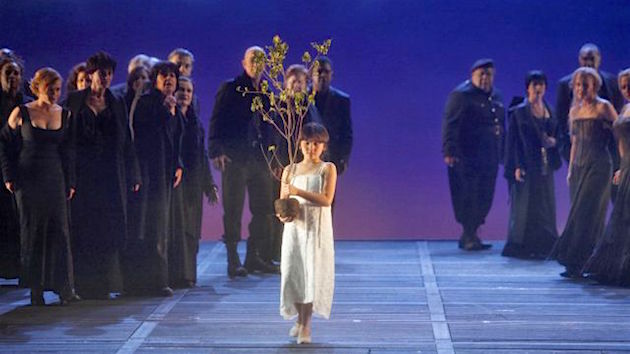
This time, the Opera’s Ring outreach is more intense and widespread than ever before. In addition to the customary series of lectures and Opera Guild events, there is now also involvement of families, young children, various target audiences, and a complex interaction with the Asian Art Museum.
Community Programs Manager Alyssa Stone says the S.F. Opera Education Department is holding a day-long celebration on June 9 in the fourth floor Wilsey Center of the Veterans Memorial Building:
We welcome families with children of all ages to discover this epic story and its music in a day of Ring-related fun. For families with little ones, ages 2-5, we will have First Act: Teething Ring (at 10 a.m. and 4 p.m.); kids ages 4–12 will have the chance to use their voices in “Sing-a-Story: Das Rheingold (at 11:30 a.m. and 2:30 p.m.)
There will also be a mid-day “Exploration Workshop: All About the Ring” (at 1 p.m., for children 6 and older). Opera prop craft-making and concessions will be available throughout the day. We invite all to discover the Ring as a family on June 9.
Stone also said of the May 19 “Drinks & Drama” program: “We will bring it back to where it started: the gorgeous, 119-year-old Dogpatch bar, The Sea Star. In “Drinks & Drama: Everything but the Ring,” we will explore operatic repertoire and voice types from across the composer’s influential works while enjoying handcrafted, curated flights of delectable cocktails”
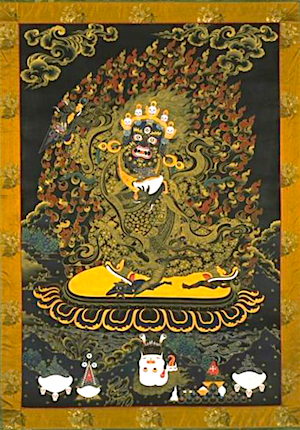
S.F. Opera’s Kip Cranna calls attention to the partnership with the Asian Art Museum, “a springboard for exploring personal transformation as a way to understanding Wagner’s Ring, with special emphasis on the subject of Wagner and Buddhism.”
Curator Durham, quoted above, continues to speak about Gonpo the Guardian: “The squirming enemies of Gonpo are representatives of the two main forces empowering the human ego, the outrageous source of all suffering: hatred and lust. [Both having prominent roles in the Ring.]
“The triangular knife in his right hand is called a phurba, and its function is to pin mercurial forces down so they may be vanquished. When they’re at last defeated, awareness finds itself without fear or desire, right here in the present moment, fully awakened, with the original purity of consciousness recovered. Who needs a rainbow bridge now?”
In the Asian exhibit is a representation of Shiva in his ferocious form, having sinned by cutting off one of Brahma’s five heads. Similarly, the description says, Brünnhilde disobeyed her father Wotan, head of the gods, and as punishment, she is stripped of her divinity. Awakening to a new existence as a mortal woman, Brünnhilde for a time struggles with fear and shame until she learns the meaning of human love. The Shiva-Parvati connection has interesting parallels.
Wagner’s connection with Buddhism and Hinduist mythology has long been examined and discussed, a subject that will be explored during the days leading up to the Ring production.
Kip Cranna and Jeff Durham offer the presentation "Diving Bodies: Wagener's Ring Cycle with the San Francisco Opera" on Thursday, April 26, 6:30–8:30 p.m. in Samsung Hall at the Asian Art Museum. More information and tickets here.



